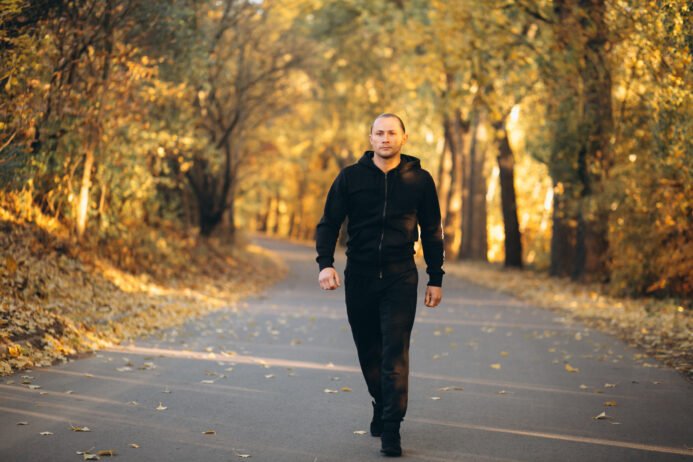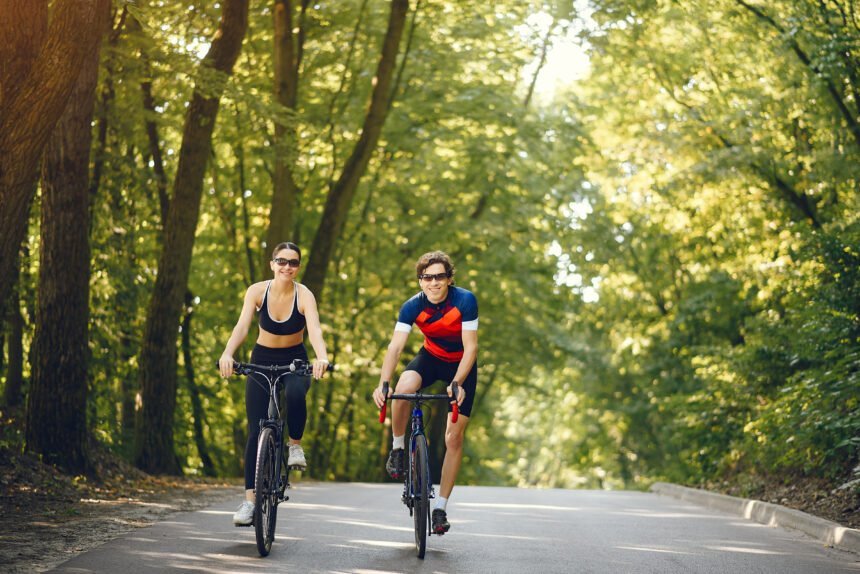When it comes to shedding pounds, choosing the right exercise can feel like picking between two trusty allies: walking or cycling. Both are low-impact, accessible, and effective for burning calories, but which one helps you lose weight faster? As of September 2025, with updated fitness research and real-world data, we’re diving into the science behind these activities, comparing calorie burn, sustainability, and expert insights. Spoiler: The “better” option depends on your lifestyle, goals, and consistency—let’s break it down.
How Walking and Cycling Burn Fat: The Basics
Both walking and cycling torch calories by raising your heart rate and engaging major muscle groups, creating a calorie deficit key to weight loss. Here’s how they work:
- Walking: A full-body mover, engaging legs, core, and arms (especially with a brisk pace or incline). It’s gentle on joints, making it ideal for beginners or those with injuries.
- Cycling: Targets the lower body—quads, hamstrings, and glutes—while sparing joints. It can be done indoors (stationary bikes) or outdoors, with intensity varying from leisurely rides to intense sprints.
Weight loss hinges on burning more calories than you consume. Let’s see how they stack up.


Calorie Burn Comparison: Walking vs. Cycling
Calorie burn depends on duration, intensity, body weight, and terrain. Here’s the breakdown based on 2025 fitness data:
Walking
- Speed: 3.5 mph (brisk walk) burns ~200-300 kcal/hour for a 150-lb (68 kg) person; 4.5 mph (power walk) ups it to 350-400 kcal/hour.
- Incline/Terrain: Hills or trails can push burn to 400-500 kcal/hour.
- Duration: Sustainable for 45-60 minutes daily, especially for beginners.
Cycling
- Speed/Intensity: 12-14 mph (moderate pace) burns ~400-600 kcal/hour; 16-19 mph (vigorous) hits 600-800 kcal/hour for the same 150-lb person.
- Terrain: Uphill or interval training (e.g., sprints) can exceed 800 kcal/hour.
- Duration: Typically 30-45 minutes, though endurance rides can extend to 1-2 hours.
Head-to-Head
- Per Hour: Cycling outpaces walking, often doubling the calorie burn at higher intensities (600-800 kcal vs. 200-400 kcal).
- Total Weekly Burn: A 150-lb person walking 5 hours/week (brisk pace) burns ~1,500-2,000 kcal; cycling 5 hours/week (moderate pace) burns ~2,000-3,000 kcal.
- Afterburn Effect (EPOC): Both trigger excess post-exercise oxygen consumption, but cycling’s higher intensity yields a slightly larger afterburn (50-100 extra kcal).
Winner? Cycling burns more calories faster, but walking’s accessibility balances the scales.
Sustainability and Weight Loss Success
Calorie burn alone doesn’t dictate weight loss—consistency does. Here’s how each fares:
- Walking: Easier to start and maintain. A 2024 study in Medicine & Science in Sports & Exercise found 70% of sedentary adults stuck to 30-minute daily walks for 6 months, losing 2-4 kg with diet tweaks. Low injury risk (1-2% strain rate) keeps you going.
- Cycling: Higher intensity can lead to faster initial loss (4-6 kg in 3 months, per a 2025 Journal of Obesity trial), but dropout rates hit 30-40% due to fatigue or equipment costs. Indoor cycling (e.g., Peloton) boosts adherence with 60% retention over 6 months.
Muscle Preservation
- Both preserve lean mass, but cycling builds more leg muscle, boosting resting metabolic rate (RMR) by 2-5% long-term. Walking maintains muscle but adds less RMR gain.
- A 2023 American Journal of Clinical Nutrition study noted 1-2 kg less fat regain in cyclists vs. walkers over a year, thanks to muscle retention.
Injury and Accessibility
- Walking: Free, no gear needed, but joint stress rises on hard surfaces (e.g., 5-10% knee pain risk over time).
- Cycling: Requires a bike (~$200-$1,000), but indoor options lower weather barriers. Risk of falls or overuse (e.g., knee strain) is 3-5%.
Sustainability tips: Start with 20-30 minutes, 3-5 days/week, and pair with a 300-500 kcal daily deficit.


Expert Opinions: What the Pros Say
Fitness experts weigh in with 2025 perspectives:
- Dr. Michelle Olson, Exercise Physiologist (Auburn University): “Cycling’s higher burn rate (600-800 kcal/hour) accelerates weight loss early—clients see 5% body fat drop in 8 weeks. But walking’s 200-300 kcal/hour is sustainable, yielding 2-3% loss over 3 months with less burnout.”
- Coach Joe Friel, Endurance Expert: In a 2025 Cycling Weekly article, “For speed, cycling wins—interval rides can double fat oxidation. But walkers who hit 10,000 steps daily lose 1-2 kg monthly with consistency.”
- Dr. Pam Peeke, Nutrition and Fitness Expert: On a 2025 Today Show segment, “Walking’s gentler pace suits all levels, aiding 1-2 kg loss with diet. Cycling’s intensity is better for athletes targeting 5-10 kg, but overtraining risks derailment.”
- Skeptic View: A 2024 British Journal of Sports Medicine review notes, “Both are effective—cycling’s edge fades if you can’t sustain it. Walking plus strength training often outperforms solo cycling for long-term loss.”
Practical Tips and Alternatives
- Walking Hacks: Add hills, use Nordic poles, or walk 10,000 steps/day (aim for 300-400 kcal burn).
- Cycling Boosts: Try 20-minute HIIT (e.g., 1 min sprint, 2 min easy) or join a spin class for 500-700 kcal.
- Hybrid Approach: Alternate days—walk 3x/week, cycle 2x/week—for 2,000-2,500 kcal weekly burn.
- Cross-Train: Add strength (e.g., squats, planks) to preserve muscle and boost RMR.
Conclusion: Faster Loss with Cycling, Smarter Wins with Walking
For losing weight faster, cycling takes the lead with its higher calorie burn (400-800 kcal/hour) and fat-oxidation edge, potentially dropping 4-6 kg in 3 months with intensity. But walking (200-400 kcal/hour) wins for sustainability, supporting 2-4 kg loss over 6 months with lower dropout rates. In 2025’s fitness landscape, the best choice aligns with your life: cycle if you crave intensity and have access; walk if you value simplicity and longevity.


